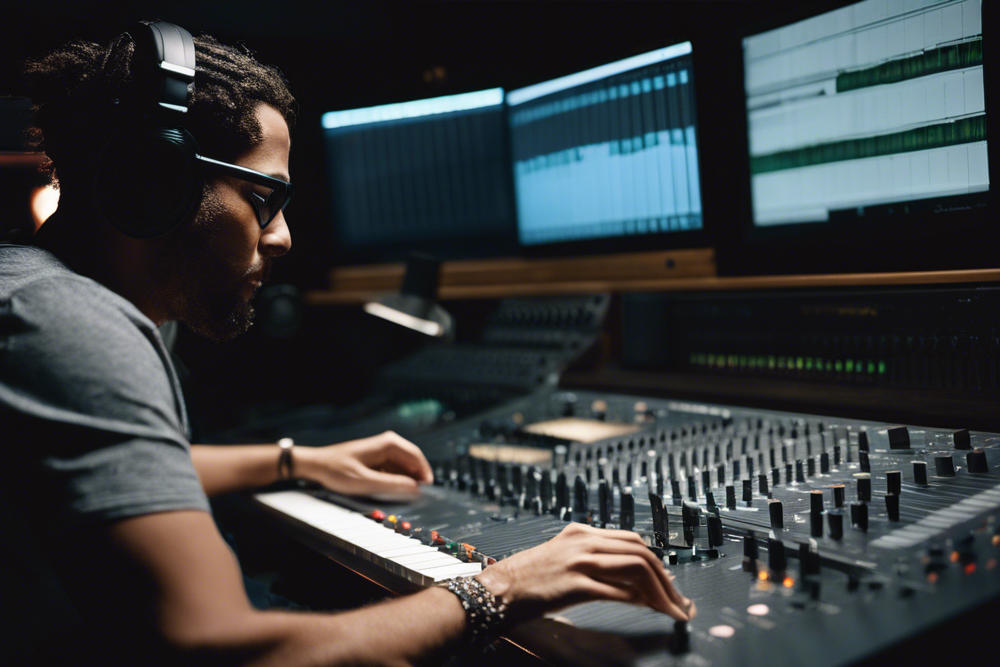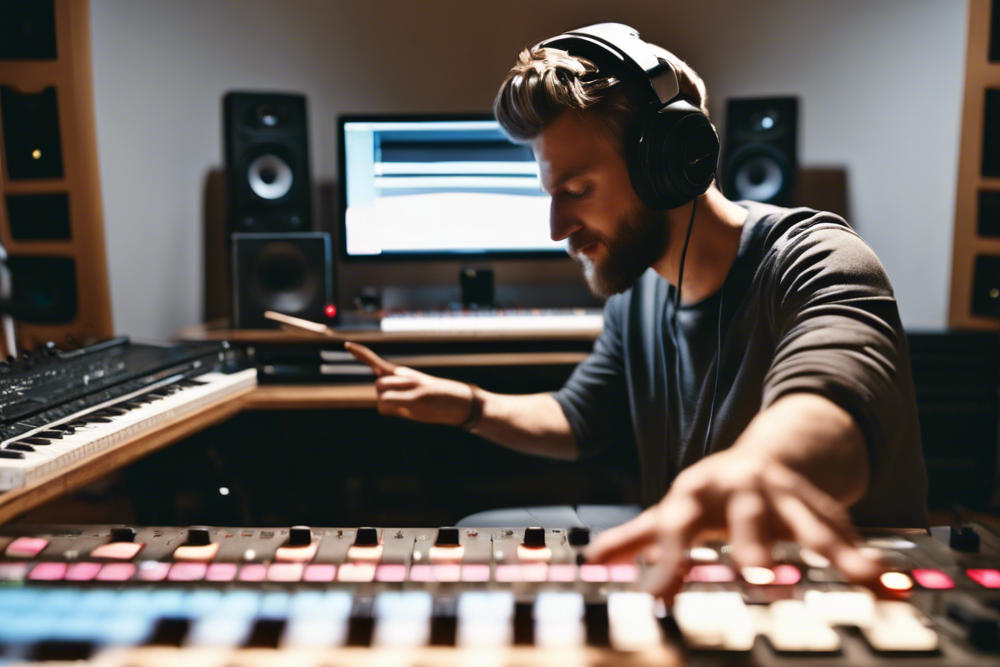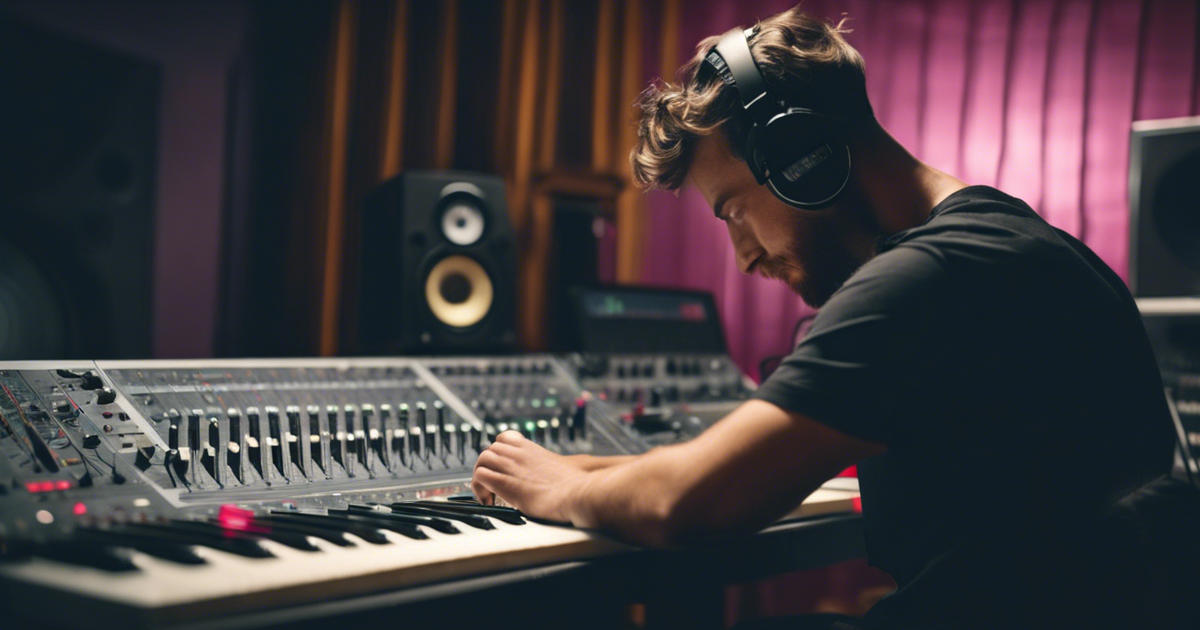Estimated reading time: 8 minutes
The Birth of a Movement
Rave music, a genre that has captivated music lovers for decades, emerged from the underground electronic dance music scene in the late 1980s and early 1990s. This high-energy, electronic-based music style quickly became the soundtrack for a new generation of rave party-goers seeking an escape from the everyday world.
The roots of rave music can be traced back to various influences, including disco, house, and techno. As DJs began experimenting with these sounds, they created a unique blend that would come to define the rave experience. The distinctive sound of rave music is characterized by its repetitive beats, electronic rhythms, and often, a driving beat that keeps dancers moving all night long.
Table of contents
From Warehouses to Mainstream
In its early days, rave culture was synonymous with underground parties held in secret locations. Abandoned warehouses, aircraft hangars, and remote fields became impromptu dance floors for those in the know. The level of secrecy surrounding these events added to their allure, creating a sense of exclusivity and rebellion that appealed to young people looking for something different.
As the popularity of rave music grew, so did the scale of the events. What started as small, illegal gatherings soon evolved into large-scale events and electronic music festivals. This transition marked a significant shift in the perception of rave culture, bringing it out of the shadows and into the mainstream.
The Sound of Rave
Rave music encompasses a wide range of electronic music genres, each with its own unique characteristics and devoted fan base. Some of the most popular subgenres include:
- Progressive house
- Trance music
- Acid house
- Hardcore techno
- Breakbeat hardcore
- Happy hardcore
These various styles share common elements, such as the use of synthesizers, drum machines, and samplers to create their signature sounds. The repetitive nature of the music, combined with its high energy and often euphoric melodies, is designed to keep dancers moving for hours on end.
The Role of the DJ and Music Producer
At the heart of rave music are the DJs and music producers who create and mix the tracks. These electronic musicians are the architects of the rave experience, crafting sets that take listeners on a journey through sound. Some of the most influential figures in the rave music scene include:
- Frankie Knuckles, often referred to as the “Godfather of House Music”
- Paul Van Dyk, a pioneer in the trance music genre
- Armin van Buuren, known for his uplifting trance productions
- David Guetta, who has helped bring electronic dance music to mainstream pop audiences
- Aphex Twin, renowned for his experimental and avant-garde approach to electronic music
These artists, along with countless others, have played a crucial role in shaping the sound and culture of rave music over the years.

The Global Spread of Rave Culture
While rave music has its roots in the club scenes of cities like Chicago, Detroit, and London, it quickly spread to become a global phenomenon. In North America, cities like San Jose and Las Vegas (in Clark County) became hotspots for rave culture, with massive events drawing thousands of attendees.
The movement also gained significant traction in Europe, with countries like Germany playing a pivotal role in the development of techno and other rave music subgenres. The Love Parade in Berlin, for example, became one of the largest electronic music festivals in the world, attracting over a million participants at its peak.
Latin America, too, embraced rave culture, with countries like Brazil and Mexico developing their own thriving electronic music scenes. The global appeal of rave music demonstrates its power to transcend cultural and linguistic barriers, uniting people through a shared love of music and dance.
The Rave Experience
Attending a rave is about more than just listening to music; it’s a multisensory experience that engages participants on multiple levels. The rave atmosphere is characterized by:
- Pulsating lights and elaborate visual displays
- Colorful clothing and costumes worn by attendees
- A sense of community and togetherness among participants
- High-energy dancing that can last for hours
The combination of these elements creates a unique party atmosphere that many find intoxicating and liberating. For many ravers, these events provide a space where they can express themselves freely and connect with like-minded individuals.
The Dark Side of Rave Culture
While rave culture is primarily about music and community, it has also been associated with drug use, particularly club drugs like MDMA (ecstasy). This association has sometimes led to negative perceptions of rave culture in popular culture and among law enforcement.
It’s important to note, however, that drug use is not an inherent part of rave culture, and many attendees participate solely for the music and atmosphere. Responsible event organizers and participants work to promote safety and well-being within the community.
The Evolution of Rave Music
As rave music has grown in popularity, it has also evolved and diversified. What started as a relatively underground movement has now become a major force in the music industry. This evolution can be seen in several ways:
Mainstream Crossover
Artists like Swedish House Mafia and David Guetta have brought elements of rave music into the pop music world, creating chart-topping hits that introduce electronic dance music to a wider audience. This crossover success has helped to further legitimize rave music in the eyes of the mainstream media and music industry.
Technological Advancements
The tools used to create rave music have also evolved significantly since the genre’s inception. Modern music producers have access to sophisticated software and hardware that allows for more complex and polished productions. This technological progress has expanded the sonic possibilities within rave music, leading to new subgenres and styles.
Festival Culture
The rise of electronic music festivals has played a crucial role in the evolution of rave culture. Events like Electric Daisy Carnival, Tomorrowland, and Ultra Music Festival attract hundreds of thousands of attendees each year, showcasing the biggest names in electronic dance music alongside up-and-coming talent.

The Enduring Appeal of Rave Music
Despite changes in musical trends and the passage of time, rave music has maintained its popularity and continues to attract new fans. Several factors contribute to its enduring appeal:
- The universal language of rhythm and dance
- The sense of community and belonging fostered at rave events
- The genre’s ability to evolve and incorporate new sounds and influences
- The escapism and release provided by the rave experience
For many, rave music represents more than just a genre; it’s a lifestyle and a form of self-expression. The energy and positivity associated with rave culture continue to resonate with music fans around the world. Take a look at the best things to wear to a rave.
The Future of Rave Music
As we look to the future, it’s clear that rave music will continue to play a significant role in the global music landscape. While the genre has come a long way from its underground roots, it still maintains a spirit of innovation and rebellion that keeps it fresh and exciting.
Emerging technologies like virtual reality and augmented reality are opening up new possibilities for rave experiences, allowing fans to participate in events from anywhere in the world. Additionally, the ongoing fusion of rave music with other genres promises to create new and exciting sounds for future generations of ravers to enjoy.
Audio-Video: TECHNO RAVE MIX – Bigroom Techno & Electro Festival Music 2023
Conclusion
From its humble beginnings in underground parties to its current status as a global phenomenon, rave music has left an indelible mark on popular culture and the music industry. Its journey reflects the power of music to unite people, inspire creativity, and provide a form of expression and release.
Whether you’re a long-time fan or new to the world of electronic dance music, the rave scene offers a rich and diverse landscape of sounds and experiences to explore. As the genre continues to evolve and adapt, one thing remains constant: the beating heart of rave music, pulsing with energy, creativity, and the joy of dance.
“Electronic music is a way for us to create a shared experience, to come together and feel the same emotions through sound. That’s the magic of rave culture.” – Anonymous raver
As we move forward, rave music will undoubtedly continue to inspire and move people, just as it has for decades. Its enduring popularity is a testament to the universal appeal of rhythm, the power of community, and the human desire to lose ourselves in music and dance.
Related Posts
FAQs
Rave music emerged from the underground electronic dance music scene in the late 1980s and early 1990s, influenced by disco, house, and techno. DJs experimented with these sounds, creating a high-energy, electronic-based music style that defined the rave experience.
Rave culture began with secret, illegal parties in warehouses and remote locations. As its popularity grew, these events evolved into large-scale festivals and mainstream electronic music gatherings, bringing rave culture into the public eye.
Popular subgenres of rave music include progressive house, trance, acid house, hardcore techno, breakbeat hardcore, and happy hardcore. These styles share common elements like repetitive beats, electronic rhythms, and high-energy melodies.
Key figures in the rave music scene include Frankie Knuckles (house music), Paul Van Dyk (trance), Armin van Buuren (uplifting trance), David Guetta (mainstream electronic dance), and Aphex Twin (experimental electronic music).
Rave music’s enduring appeal is due to its universal rhythm and dance language, the sense of community at rave events, its evolving sound, and the escapism it provides. This combination keeps attracting new fans and maintains its popularity across generations.
